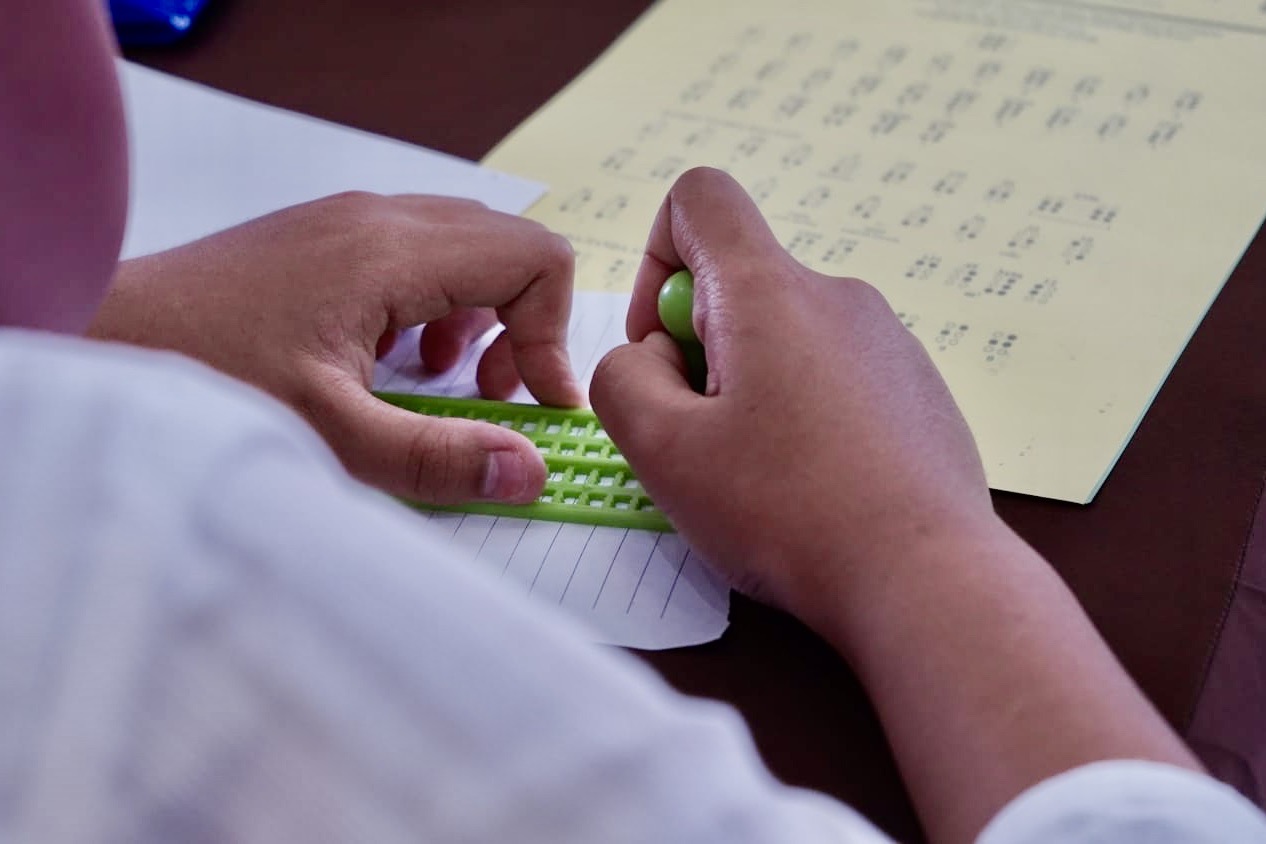Jakarta (January 5, 2023) – January 4, the birthday of Louis Braille is
celebrated internationally as "Braille Day". Louis Braille was born on
January 4, 1809, in Coupvray, France. Thanks to his innovation, more than 40
million blind people worldwide can learn to read and write and therefore
receive the same education as their sighted counterparts.
Efforts to create writing for blind people have
started. It was at least 17 centuries ago when a blind Japanese scholar in the
4th century carved letters in wood and built a library large enough to collect
his works. Until the early 19th century, people in Europe were still
concentrating on helping the blind learn to read and write by enlarging Latin
or Roman letters using string, metal scraps, leather, or paper, but the results
were far from satisfactory.
The peak of the success of these efforts was
reached by Louis Braille, a shoemaker's son who became blind as a result of
being scratched in the eye by his father's leather knife. Louis Braille got the inspiration for his creation from Captain Charles Barbier, a former officer in
the Napoleonic artillery. During the Napoleonic wars, Barbier created a cipher
consisting of raised dots and dashes which he called "night writing".
He used this script to enable his troops to read military orders in the dark of
night by feeling them through their fingertips. Although Barbier's creation had
proven successful for military use, it was not suitable for ordinary reading
and writing purposes. However, it gave Louis Braille invaluable clues to what
he was looking for.
After meeting Charles Barbier, Louis Braille took
every opportunity to dot and dash on cards to create suitable
writing for the blind. He always tries every development of his writing on his
blind friends. Realizing that his friends' fingers were more sensitive to dots
than to lines, he decided to use only dots and put lines aside for his writing.
Finally, in 1834, when Louis Braille was in his early 20s, the raised dot system was perfected. Louis Braille uses only six dot dominoes as the framework for his writing system. The location of one or several of the six dots is varied to form as many as 63 kinds of combinations which are enough to describe the alphabet, numbers, punctuation, mathematics, music, and so on. When 'Louis Braille was still simplifying his writing system, he was appointed teacher at L'Institution Nationale des Jeunes Aveugles (National Institute for Children with the Blind) in Paris which was founded by Monsieur Valentin Hauy in 1783. He soon became an excellent teacher preferred. He was entrusted with teaching history, geography, mathematics, French grammar, and music. When his writing system was perfect enough, he began to try it on his students. They welcomed it with joy and greatly benefited from it. Although Dr. Pignier, the head of the institute, allowed the writing system to be used in teaching at the school, no one outside the institution wanted to accept its existence, because they had never seen how good this writing system was, teaching writing that was different from common writing, he considered it a something very odd and unreasonable.
Because the governing body of the institution did not like this writing system, they fired Dr. Pignier when he planned to copy history books into braille. The new chief, Dr. Dufau did not approve of the Braille system and strictly prohibited its use, because his students already knew the goodness of Braille writing. They were no less disappointed than Braille himself, so they asked him to teach Braille secretly for the sake of his students.
He agreed to teach them outside of school hours, since the teacher and all the students in the class were blind, the other teachers could peek into the secret classroom and watch without them knowing.
The head of teaching staff, Dr. Guadet, often observed these secret lessons with great interest and sympathy. After seeing how quickly the students understood the teachings conveyed by Braille, Dr. Guadet appealed to Dr. Dufau to change his position and allow the use of the writing system. Finally, Dr. Dufau agreed, and by 1847 Louis Braille was again able to teach his creation freely.
In 1851 Dr. Dufau submitted the Braille creation to the French Government with a request that the creation receives government recognition, and that Louis Braille is given a commendation, however, until he died on January 6, 1852, he never received a recommendation or official recognition for his creation. Only a few months after his death, Louis Braille's creation was officially recognized at L'institution Nationale des Jeunes Aveugles. A few years later it was used in several schools for the blind in other countries.
It was only towards the end of the 19th century that this writing system became universally accepted as the writing name "Braille". Now it has been more than a century and a half since braille writing was created perfectly, but technological advances have still not been able to compete with its prowess. Even recently, braille writing has once again proven its perfection because it can easily be adapted to transmit information from data processing devices such as computers.
To commemorate his infinite services, in 1956
The World Council for the Welfare of the Blind (World Council for Welfare of
the Blind) made the former residence of Louis Braille located in Coupvray, 40
km east of Paris, the Louis Braille museum. Because in 1984 WCWB merged with
the International Federation of the Blind to become the World Blind Union,
since that year the maintenance and development of this museum has become the
responsibility of the WBU.
 Bahasa
Bahasa
 English
English


